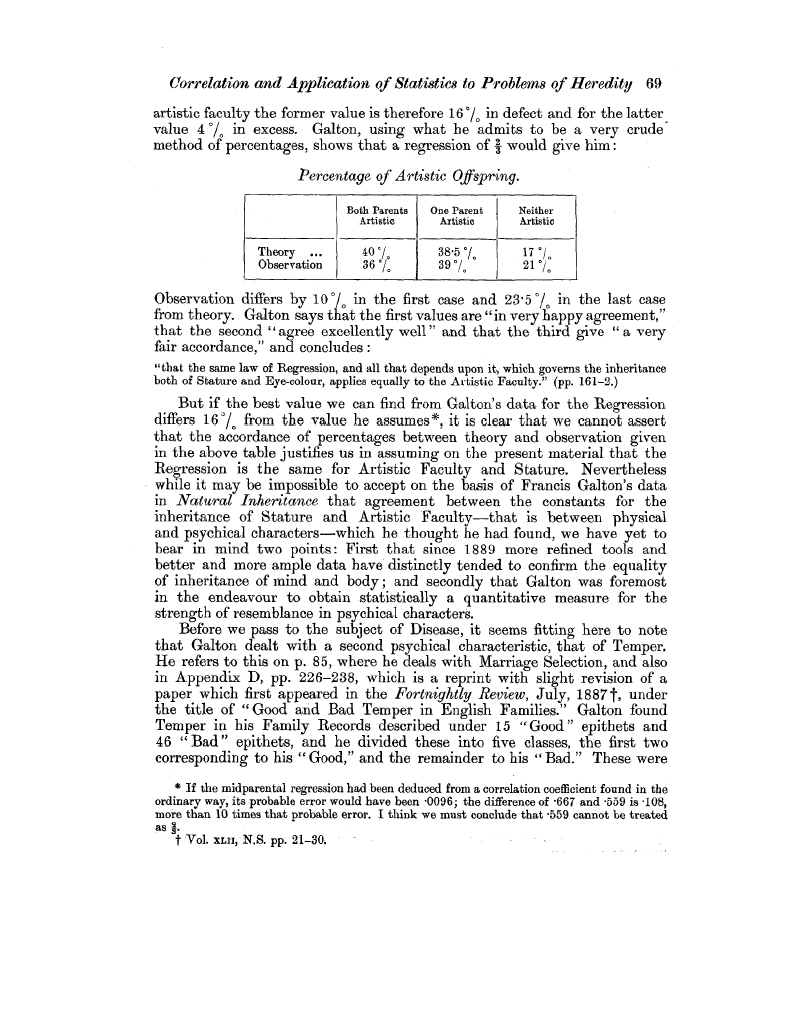| ||||||

OCR Rendition - approximate
Correlation and Application of Statistics to Problems of Heredity 69 artistic faculty the former value is therefore 16'1. in defect and for the latter value 4 '/o in excess. Galton, using what he admits to be a very crude method of percentages, shows that a regression of 3 would give him Percentage of Artistic Offspring.
Observation differs by 10'/0 in the first case and 23.5'/. in the last case from theory. Galton says that the first values are "in very happy agreement," that the second " agree excellently well " and that the third give " a very fair accordance," and concludes "that the same law of Regression, and all that depends upon it, which governs the inheritance both of Stature and Eye-colour, applies equally to the Artistic Faculty." (pp. 161-2.) But if the best value we can find from Galton's data for the Regression differs 16'/o from the value he assumes*, it is clear that we cannot assert that the accordance of percentages between theory and observation given in the above table justifies us in assuming on the present material that the Regression is the same for Artistic Faculty and Stature. Nevertheless while it may be impossible to accept on the basis of Francis Galton's data in Natural Inheritance that agreement between the constants for the inheritance of Stature and Artistic Faculty-that is between physical and psychical characters-which he thought he had found, we have yet to bear in mind two points: First that since 1889 more refined tools and better and more ample data have distinctly tended to confirm the equality of inheritance of mind and body ; and secondly that Galton was foremost in the endeavour to obtain statistically a quantitative measure for the strength of resemblance in psychical characters. Before we pass to the subject of Disease, it seems fitting here to note that Galton dealt with a second psychical characteristic, that of Temper. He refers to this on p. 85, where he deals with Marriage Selection, and also in Appendix D, pp. 226-238, which is a reprint with slight revision of a paper which first appeared in the Fortnightly Review, July, 1887', under the title of "Good and Bad Temper in English Families." Galton found Temper in his Family Records described under 15 "Good " epithets and 46 " Bad" epithets, and he divided these into five classes, the first two corresponding to his "Good," and the remainder to his "Bad." These were * If the midparental regression had been deduced from a correlation coefficient found in the ordinary way, its probable error would have been •0096; the difference of •667 and •559 is •108, more than 10 times that probable error. I think we must conclude that •559 cannot be treated as 1. t Vol. aLIJ, N.S. pp. 21-30. -
|